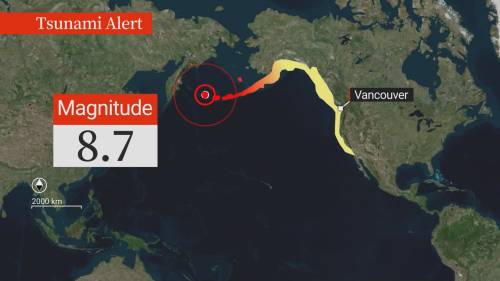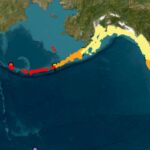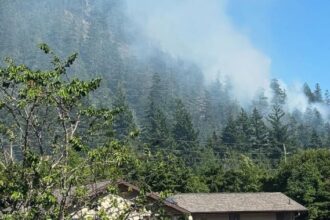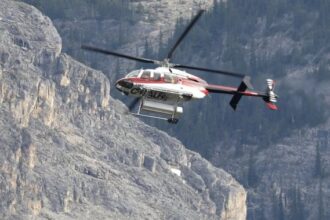A magnitude 7.0 earthquake struck off Russia’s Kuril Islands late Thursday night, triggering tsunami advisories along British Columbia’s coastline and putting emergency response systems to the test. The powerful seismic event, centered approximately 7,000 kilometers from Vancouver Island, prompted immediate action from Canadian authorities as potential tsunami waves threatened BC’s vulnerable coastal communities.
Emergency officials issued the advisory shortly after 11:30 p.m. local time, warning residents in low-lying coastal areas to stay vigilant and away from shorelines. “We’re monitoring water levels continuously,” said Dr. Tania Anderson, senior seismologist with Natural Resources Canada. “While this isn’t a full evacuation order, we’re asking coastal residents to exercise caution until we can determine the full impact.”
Initial projections from the National Tsunami Warning Center indicated that any waves reaching BC shores would likely measure under 0.3 meters—significantly smaller than those potentially affecting Alaska and Russia’s eastern coastline. Despite the modest predicted wave heights, emergency management officials emphasized that even small tsunamis can generate dangerous currents and unpredictable water behavior.
“The advisory isn’t about massive waves crashing over seawalls,” explained Vancouver Island Emergency Management coordinator James Hsu. “It’s about strong, unpredictable currents that can put mariners and beachgoers at serious risk, sometimes for hours after the initial wave arrives.”
Communities along Vancouver Island’s western edge implemented their tsunami response protocols, with emergency operations centers activated in Tofino, Ucluelet, and Port Alberni—areas historically vulnerable to tsunami events. The advisory came at a challenging time, with many coastal communities hosting summer tourists unfamiliar with emergency procedures.
Social media channels and the provincial emergency alert system quickly distributed information, though some residents reported confusion about the difference between a tsunami “advisory” versus a more serious “warning.” BC Emergency Management clarified that advisories indicate a tsunami threat with potential for strong currents and dangerous waves, while warnings would trigger immediate evacuation of coastal zones.
“Our response system performed exactly as designed,” said Provincial Emergency Preparedness Minister Bowinn Ma at a press briefing early Friday. “From detection to public notification, we’re seeing the benefits of improvements made to our coastal warning infrastructure following previous seismic events.”
For coastal First Nations communities, many of which maintain traditional knowledge of tsunami response passed down through generations, the advisory activated well-rehearsed emergency plans. “Our ancestors knew to move to higher ground when the ocean behaved unusually,” said Nuu-chah-nulth elder Robert Williams. “Today we combine that knowledge with modern alert systems to keep our people safe.”
The event serves as a sobering reminder of British Columbia’s position within the geologically active “Ring of Fire,” where approximately 90% of the world’s earthquakes occur. While the province has been spared catastrophic tsunami impacts in recent decades, geological evidence confirms devastating waves have struck the Pacific Northwest coast repeatedly throughout history.
As dawn broke Friday, authorities continued monitoring water levels while maintaining the advisory. Marine operators were instructed to secure vessels and avoid unnecessary travel until conditions normalized. For coastal residents, the event offered a real-world test of emergency preparedness that many have practiced but few have experienced.
Will this advisory prompt more British Columbians to prepare emergency kits and familiarize themselves with evacuation routes? Emergency management experts certainly hope so, as scientists continue to warn that the region remains overdue for a major Cascadia Subduction Zone earthquake that could trigger a far more significant tsunami event than Thursday’s advisory.
For the latest updates on this developing situation, visit CO24 Breaking News for continuous coverage of emergency events affecting British Columbia’s coastal communities.










